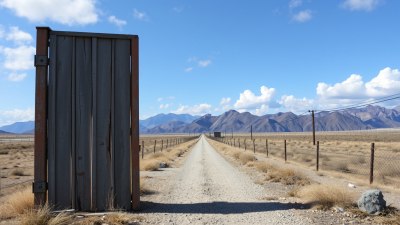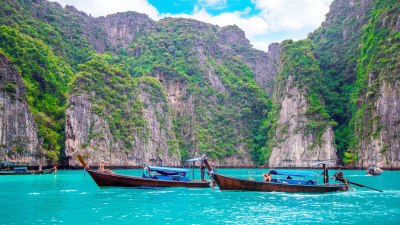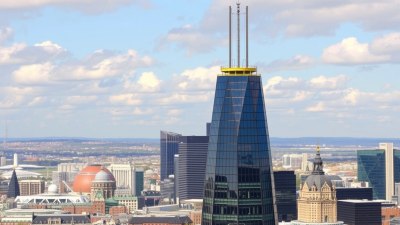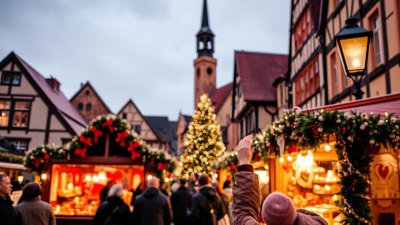When Borders Feel Like Doorways
Explore how borders shape our lives, evolving from barriers to gateways of opportunity and connection.

Image created with Flux Schnell
Borders, in their essence, are defined as lines separating regions, countries, and territories. Yet, what if these lines did not merely signify division but also served as doorways, leading to new opportunities and experiences? This article delves into the multifaceted nature of borders, exploring their historical significances, cultural implications, and personal narratives while embracing the idea that they can be both boundaries and gateways.
The Historical Context of Borders
Throughout history, borders have been established as a means to delineate territorial claims, control resources, and manage populations. From the Roman Empire’s vast reach to the modern nation-state system, borders have shaped political landscapes and human experiences. Some of the most famous borders, such as the Great Wall of China and the Berlin Wall, serve as powerful reminders of the lengths societies have gone to protect their territories. However, these same borders often led to complex societies evolving on either side, frequently intertwining in cultural exchanges that defy their strict delimitation.
Cultural Significance of Borders
Culturally, borders can be seen as points of intersection rather than mere divisions. In many cases, they foster unique synthesis of identities, languages, and traditions as people move across them. For example, the culturally rich region of Alsace-Lorraine, straddling France and Germany, highlights how borders can enrich rather than diminish the human experience. Here, the blend of French and German cultures creates a vibrant, dynamic community that reflects resilience and adaptability in the face of arbitrary divisions.
Personal Narratives and Experiences
On a personal level, borders can evoke feelings of both confinement and liberation. For individuals who have crossed borders, whether physically or metaphorically, the act often carries profound significance. Stories abound of refugees who fled conflict zones and found safety in neighboring countries, presenting borders as pivotal points of transition. Their journeys illustrate resilience, hope, and the pursuit of a better life, transforming borders from lines on a map into crucial stepping stones towards safety and opportunity.
The Modern Perspective on Borders
In today’s globalized world, the understanding of borders is shifting. Technology and communication have made physical borders feel less confining, as virtual connections create new pathways for collaboration and interaction. Social media platforms, international businesses, and cultural exchanges challenge the notion of borders as absolute barriers, suggesting a new narrative where digital borderless spaces provide gateways for diversity and unity across nations.
Borders as Mechanisms of Control
Yet, the reality is that many borders are also mechanisms of control. Political dynamics often lead to restrictive immigration policies, surveillance, and militarization of borders, creating physical and psychological barriers between people. Discussions surrounding the U.S.-Mexico border, for instance, reveal the complexities involved in framing borders as pathways or walls. Activists work tirelessly to pave pathways for migrants seeking refuge, illustrating that, while some may view borders merely as barriers, others see opportunities for compassion and collaboration.
The Concept of Fluidity
The modern understanding of borders is increasingly fluid. Sociologists and political theorists suggest that as globalization intensifies, the rigidity of borders diminishes, giving rise to transnational identities and hybrid cultures. Individuals now often identify with multiple nationalities, cultures, and communities, celebrating diversity and the blending of traditions over division. This perspective acknowledges that while borders exist, human connections often transcend these lines, creating an evolving narrative that emphasizes shared experiences and common values.
Border Crossings in Literature and Art
Literature and art have long grappled with the themes of borders and transitions, exploring the emotional and psychological impacts of crossing borders. Writers like Chimamanda Ngozi Adichie and Salman Rushdie reflect on the complexities of identity shaped by borders, while artists use various mediums to convey their interpretations of what borders mean to them. These works contribute to a dialogue that invites reflection on our understanding of borders and the ways they shape our narratives.
Redefining Border Experiences
In redefining our experiences of borders, we can embrace the idea of them as doorways. Community initiatives, cultural exchanges, and collaborations across borders promote connectivity. Festivals celebrating multicultural heritage, cross-border trade agreements, and educational programs serve as reminders that borders can foster relationships and solidarity. These initiatives contribute to breaking down walls, allowing individuals to traverse physical and metaphorical borders towards understanding, empathy, and shared humanity.
The Future of Borders
As we look toward the future, the trajectory of borders will likely continue to evolve. Political, social, and economic changes will influence how borders are viewed and experienced. With discussions surrounding climate change, migration, and global health, societies will need to rethink their approach to borders in a way that promotes inclusion and security. Advocacy for open, compassionate policies could transform how borders are perceived, aligning them more with the idea that they can serve as gateways rather than barriers.
Embracing the Idea of Doorways
Ultimately, the notion of borders as doorways challenges us to rethink how we view divisions in our world. While they may represent separation, they also possess potential to lead us toward new connections and opportunities. Embracing this perspective fosters hope and invites us to become more inclusive and understanding of the complexities inherent in our human experience. By recognizing that borders can be both barriers and bridges, we can strive towards a future where these lines inspire dialogue, collaboration, and shared aspirations.











